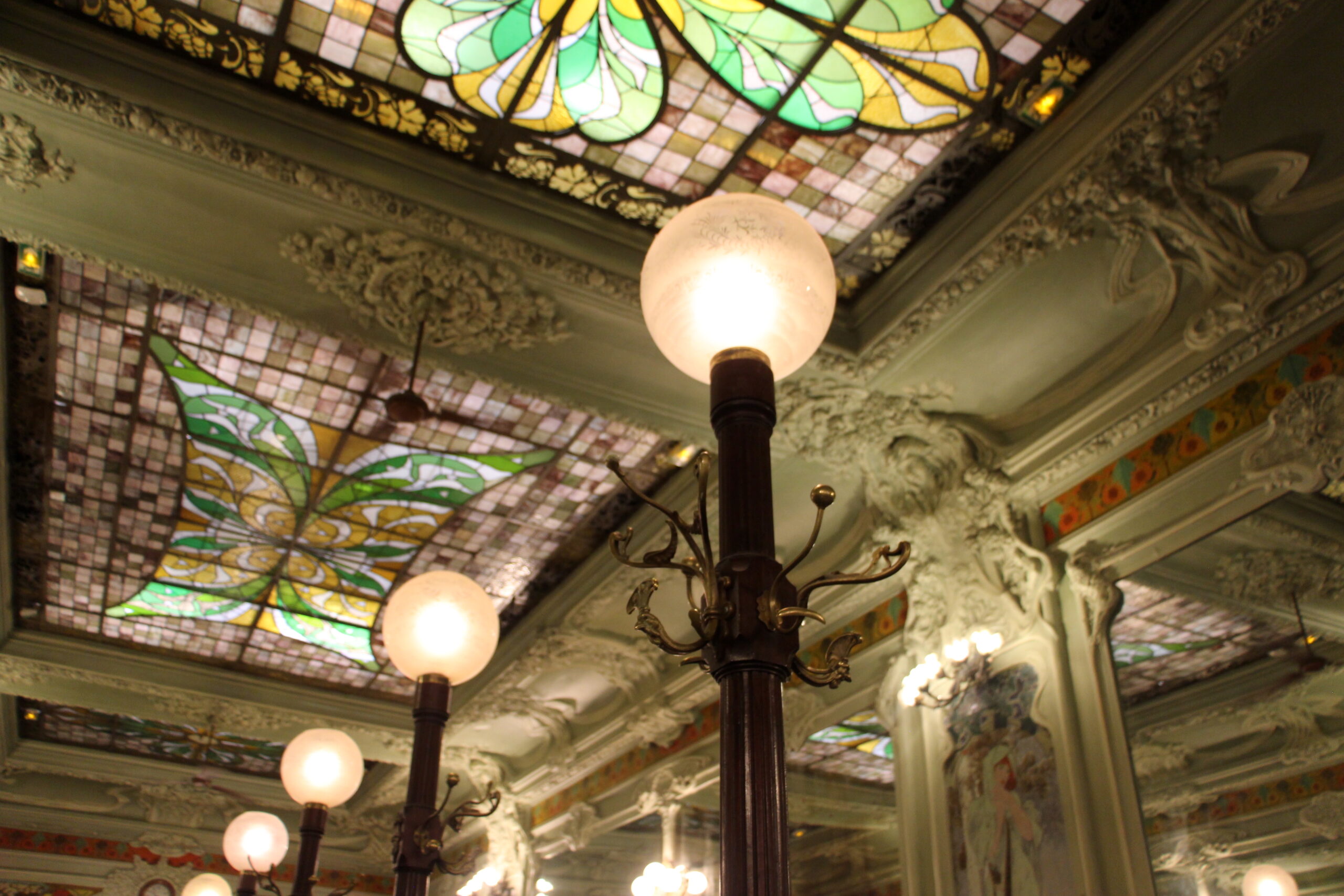When Bouillon Pigalle first opened in 2017, everyone was atwitter about the mind-bogglingly cheap dishes – especially the egg-mayo, a steal at just 1.90. Compounded with the convivial vibes in the boisterous space just south of the Butte Montmartre, it made the spot the ideal counterpart to those classic French restaurants that, with their solemnity and attention to detail, can occasionally suffuse the dinner hour with an ambiance ranging from grave to downright overbearing in its gravitas.
But while Pigalle and its sister restaurant Bouillon République have certainly suffused the genre with new vibrancy, in reality, bouillons are nothing new. The first, opened by butcher Alexandre Duval in 1854, was originally intended as a means of upcycling offcuts he couldn’t sell to his more bourgeois customers by transforming them into broths. Sold at low prices to the working classes, the broths – and broth-focused restaurants – were soon popping up all over the city, becoming, in essence, the first chain restaurants. By 1900, there were around 250 of these restaurants in the city, now peddling not just eponymous broth but other staples like beef bourguignon, chocolate mousse, and escargots. That the fare was so cheap and the service so quick meant that Paris, unlike other world capitals, never really developped a robust street food offering. Instead, by the early 20th century, the bouillon wasn’t just a go-to for the working class, but for middle and upper classes as well.
Some of these original bouillons have, of course, since shuttered, but Bouillon Julien is one stalwart, serving up inexpensive French classics since 1906 in a gorgeous Art Nouveau dining room. And since it’s but a mere 15-minutes’ walk from my home, it seemed high time I checked it out.
The menu here is similar to that of Bouillon Pigalle, with a few notable differences. Here, the egg-mayo goes for 4.30 euros rather than the 2.50 Pigalle still charges. Here, too, there’s still a beef bouillon on the menu, seasoned with coriander and lemongrass (9.90).
The dining room, far more diminutive than at either Pigalle or République, is even more beautiful in my opinion, with its magnificent mahogany bar and glass ceiling designed by Bernard Buffet. Art on the wall inspired by Mucha was crafted by Louis Trezel, with four woman-flower hybrids, each symbolizing one of the four seasons, illuminated with beautiful floral sconces.
It’s a lovely place to wait for the food to be served, which admittedly is a bit hit-or-miss. This tuna rillettes with lime (5.40) was little more than mashed up tinned tuna, with no real sauce or seasoning to speak of.
Luckily, the bread is excellent, rendering the tuna a bit more interesting.
Also excellent was this charred leek-vinaigrette topped with perfectly toasted hazelnuts (4.50), sitting in a pool of mild vinaigrette. The leeks themselves were silky and sweet, with the bitterness from the char providing the ideal counterpoint.
A bowl of penne tossed with ricotta, arugula, and tomatoes (4.60) didn’t quite seem to fit the setting, but it was quite tasty. A larger portion (10.90) is one of two main dishes catering to vegetarians, alongside a medley of summer veg and tomatoes (10.80).
But most mains skew meaty, like this braised chicken leg parmentier (11.90), which was perfectly seasoned and tender, if a bit lukewarm in temperature.
The saithe in tomato sauce with zucchini (12.90) was on-point in the flavor department, with a special nod to the zucchini, which weren’t just perfectly cooked but had a welcome hint of heat. Too bad it was suffering a touch in texture; I suspect the fish of having been frozen.
The other fish offering – sea bream with olive oil mashed potatoes and sauce vierge (13.80) – did not suffer the same crime. The fish itself was perfectly cooked, and the raw tomato-onion sauce added a lovely freshness to the dish.
I also discovered perhaps my new favorite dessert: lemon crémeux (5) – a sort of set custard not dissimilar to if a lemon curd and a crème anglaise had a baby. Here it was crowned with a buttery Breton shortbread biscuit.
I loved discovering this new-to-me bouillon, and if push came to shove, despite the prices here being slightly higher than in the neo-bouillons, I think I’d recommend it over either one. Bouillon Pigalle is plagued with eternally long lines, and even though I loved the food at République on my first visit, since then it’s proven middling to poor – a problem I think probably comes down to the sheer size of the space. Bouillon Julien, by contrast, is far enough off the beaten track to avoid both problems, and the dining room is so glorious it really deserves to be enjoyed.
Bouillon Julien – 16, rue du Faubourg Saint-Denis, 75010









